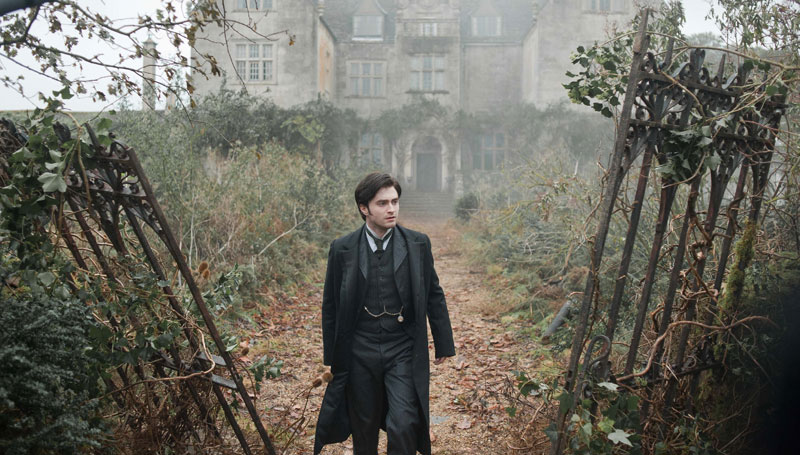Traditional theatre or Hollywood cinematic? Minimalist props or sweeping landscapes with cold, dour architecture and endless beaches? Imagined haunted houses or in-your-face, no detail-spared movie sets? Such are your choices when you decide between viewing the Stephen Mallatratt stage adaptation of Susan Hill’s 1983 novel, The Woman in Black, or the cinematic version of the same novel.
Arthur Kipps is a young London lawyer sent to the village of Crythin Gifford in the bleak North East of England to attend the funeral of Alice Drablow and put her estate in order. As he sorts through the widow’s papers in her secluded property, Eel Marsh House, Kipps begins to feel that he is not alone. Sightings of a strange woman dressed in black begin to manifest. Each sighting is accompanied by the tragic death of a child in the nearby village. As Kipps slowly works through the widow’s papers he begins to piece together a tragic tale of loss and vindictive revenge.
After being well received at the Stephen Joseph Theatre-In-The-Round in Scarborough in 1987, Mallatratt’s stage adaptation moved to the Fortune Theatre in London’s West End in 1989 where it still runs today. In 2012, the cinematic version of the story was released, bringing this blood-freezing tale of a grieving and vengeful ghost to the masses.
The Fortune’s intimate size – a mere 423 seats – coupled with its dark, almost foreboding décor, makes it purpose-built to house The Woman in Black. Audiences immediately feel they are in the story rather than just watching as an outsider. The two actors (three if you include the lady of the show’s title) ensure that you identify with the characters and you really feel the thrills and chills of Mallatratt’s excellent stage adaptation.
The dialogue and sound effects at key story stages slowly build the tension until it snaps with a shocking assault on one, or both, of the visual and auditory senses. The clever use of minimal props: a wicker basket desk converts to a horse drawn carriage seat, nursery furniture draped with white cloths become a misty graveyard when viewed through
a translucent stage curtain…
Cut now to the cinematic version
of the novel, which stars Daniel Radcliffe as Arthur Kipps.
The methods deployed to portray horror in an air-conditioned, spacious, state-of-the-art auditorium concentrate on the visual sense, and The Woman in Black uses all the Hollywood clichés to achieve the desired results: first person walkthroughs of dark rooms and corridors, shadowy alcoves, flashbacks, third person audience observation (she’s behind you Daniel!)…
Audio cues are also used to let you know when to be frightened and generally achieve the desired results, with popcorn hurling and nervous giggling. The traditional view of bleak, windswept land and seascapes of the North East, inhabited by dour, hard-faced people living in no-nonsense cottages and possessing a whole skeleton of suspicious bones in their bodies, is perfect for this story. Radcliffe plays a believable Kipps and lots of close-ups of his tortured face ensures you empathise with him.
The cinematic version deviates from the stage adaptation by introducing more characters and deaths, although the emphasis remains more on chills than blood and gore.
So which to see? The cinematic version holds the viewer by the hand and leads them to the set pieces and has a typical Hollywood ending.
The theatre production relies on atmosphere and imagination to achieve the desired results and it does this extremely well. There is of course the alternative option – view both versions and enjoy them for their individual takes on this original, and highly successful, ghost story. I did!



